
How to start an e-commerce business in 12 steps

Recently, we produced an in-depth guide to starting an online business that looks at the benefits of running a business on the internet and ideas to make it work. In this article, we’ll take a deep dive into one of those ideas: e-commerce.
In 2019, 87% of people made an online purchase, helping the UK e-commerce market surpass the 200 billion euro mark. By the end of 2020, that number is expected to increase by 11% to 222.5 billion euros, with e-commerce accounting for 27.5% of total retail sales.
E-commerce is no longer a novel, unproven and untrusted market. For most people, buying online is second nature and in many cases, the first choice. Especially in a landscape forever changed by COVID-19.
In this post, we’ll show you how to capture your own piece of the online market by walking you through how to start an e-commerce business, from finding a product to registering your business to launching your online store. Let’s get started.
Table of contents
- Find a product to sell
- Choose a business model for sourcing products
- Get to know the competition
- Create your business name and logo
- Register your business
- Write your business plan
- Set up an Internet Merchant Account (IMA)
- Choose your e-commerce platform
- Build your online store
- Prepare to ship your products
- Make your pre-launch checks
- Market your online store to drive traffic
1. Find a product to sell
The success of your e-commerce business hinges on the product(s) that you choose to sell. Your product choice will also affect the business model you choose as well as how you eventually market your brand. So, what should that product be?
Regardless of what industry you operate in, there are two types of products you can sell:
- Commoditised products: Essential and popular products that can be easily interchanged. One example of commoditised products is technology goods like keyboards because people with computers will need them. Others include fast fashion or sporting goods. These types of products make up the majority of online sales because everyone needs them.
- Niche products: Goods that serve a specific customer base. For example, handmade jewellery or crafts. Niche products come as one-of-a-kind offerings or are sold in small batches, but scarcity can create high demand and build a loyal follower base.
The best approach is to offer a combination of both commoditised and niche products. That’s because commoditised products cast a wide net and drum up interest while niche products help you stand out from the crowd.
Use commoditised products to drive profits, especially at first, and niche products to create loyal customers.
Choosing a specific product
When choosing a product, think less about what will make you money and more about what people will buy. Ask yourself:
- What am I passionate about?
- What industries do I know?
- What problems do I and people I know have that need solving?
If there’s a business idea you’ve had for years, it could be worth pursuing. And being knowledgeable and enthusiastic about what you sell will help get customers excited.
Start by brainstorming your business ideas. Write down every product you’d like to sell that you think could be a success. From there, test the strength of your ideas with research.
- Ask friends, family and followers on social media about their problems
- Search Google and social media to find out which products are being talked about
- Search consumer trends in publications like Trend Hunter and Trend Watcher to see where the market is headed
- Find out the weight and durability of the product. The easier your product is to ship, the easier it will be to store and return.
Quick Tip: Choosing the right business idea is no easy task. It involves a ton of research, analysing other people’s successes and failures, identifying gaps in the market and much more. To learn more about what makes a good business idea and exactly how to decipher if your idea makes the cut, read our guide to 15 business ideas you can get started with today.
At time of writing, Shopify’s regularly updated list of trending products to sell online, the top 12 items are:
- Pet bed
- One size fits all sofa and couch covers
- Minimalist jewellery
- Beard straightener
- Shapewear
- Backpacks
- Post-workout massage guns
- Plaid hoodie
- Smartwatches
- Infant and baby carrier
- Athleisure
- Mesh shoes
Notice how this list includes both commoditised items (pet beds, athleisure, shapewear) and potential niche products (minimalist jewellery, beard straightener, couch covers).
Another way to find out what sells well is to look through the best-selling sections of online marketplaces like Amazon, Etsy and AliExpress.

Finally, take your list of product ideas and visit websites of your future competitors to see which items sell well for them.
Once you’ve decided on what to sell, it’s time to work out where and how you’re going to get hold of your products
2. Choose a business model for sourcing products
There are four common business models for sourcing products:
1. Making products yourself
Making your own products gives you full control over the quality of the product you produce. It’s also great for starting small. As there’s no need to purchase large orders of units, you can keep production costs low, which will help you when getting your business off the ground.
However, you’ll need to think about whether the product can be made by hand and if so, the costs of raw materials, storage and labour. And if your plan is to scale your e-commerce business in the future, you’ll need to consider how you’ll meet demand. Will you employ skilled makers or move towards a manufacturing model?
2. Manufacture
If you don’t want to make products yourself, you can find a manufacturer to produce them for you.
Manufacturers are available domestically and overseas. As you might expect, given the cost of living in the UK, manufacturers in countries such as China, Indonesia, India and Taiwan are cheaper options. Regardless of where your manufacturer is located, you remain in control of the price of the product and can test for quality before selling to your customers.
Manufacturing is a big upfront expense because you often have to place large orders upfront. But, if you’re confident that your product will sell, placing these bulk orders will help keep the cost per unit low and margins high.
3. Wholesale
Wholesale involves buying products directly from a manufacturer or middleman at a discounted price and selling them on at a higher price.
It’s a low-risk approach that allows you to buy and sell items that are already established, making it a great way to get up and running quickly. However, brands will have some say over pricing and how, or if, you’re able to discount products. You’ll also need to think about how you’ll differentiate yourself from competitors to convince consumers to purchase from you.
4. Drop-shipping
With drop-shipping, you never see or own the product. Instead, you work with a dropship partner that fulfils the order on your behalf. You list the products and take orders on your e-commerce website, then forward these orders to the supplier who picks, packs and ships them to the customer.
Like wholesale, drop-shipping allows you to sell already established products and make a profit by charging the customer more than the supplier charges you.
Start-up costs are low, products are easy to source and you don’t need to buy or stock a large inventory. However, the low barrier to entry means there’s stiff competition and margins tend to be small, meaning you need to sell a significant number of products to turn a profit.
Which of these models is right for you depends on what you plan to sell, how much involvement you want in the price and quality control of your products and how much you’re able to invest upfront.
Weigh up the pros and cons for each method and think about which model best fits with your long term business plans.
Quick Tip: To help with pricing, read our guide on how to price a product, which includes six steps to achieve profitable markups.
3. Get to know the competition
Researching the competition helps you understand your rivals—not so you can copy them, but so you can strategically set yourself apart from the crowd.
Doing this now will help you tailor your offer so that you can launch with a competitive advantage.
Start by analysing the competition. You can do this in five steps. We go into depth on each of these steps in our post on how to run a competitive analysis (and win the race), but here they are in brief:
- Step 1: Identify and segment your competitors. Break your competitors down into five segments:
- Direct competitors
- Indirect competitors,
- Potential competition,
- Competitors solving the same problem
- Competitors of attention
Find as many competitors as you can (between 10 and 20 is ideal).
- Step 2: Analyse their market position. Look at the website of each competitor to find out their value propositions, unique selling points (USP) and core market. How can you be different?
- Step 3: Review their content and social media. Look at the formats and themes of their owned content. Do they publish blog posts, email newsletters, videos, guides? What do they offer customers to acquire leads? What social platforms do they use? What do they post? How do they talk to customers? What do they do well and what could you do that they’re not?
- Step 4: Check out what their customers are saying. Search websites and review platforms and look for both positive and negative feedback to identify strengths and weaknesses.
- Step 5: Walkthrough their customer journey. Go through their check out process and newsletter sign up forms. How simple are they? Could you improve upon them by simplifying the process and offering better post-purchase or sign-up content?
Following these steps will give you a feel for how your competitors serve their customers and a clearer idea of what you can do to stand out.
Creating your unique selling proposition
Using your competitive analysis, come up with your unique selling proposition—the factor that makes your e-commerce store better than the rest and the reason shoppers should choose you.
A USP should be:
- Memorable and distinguishable from everything else on the market
- In line with your audience’s values
- Something that can be consistently backed up
For example, rather than go down the overused route of having the ‘richest’ coffee around, Death Wish Coffee sells the ‘world’s strongest coffee’.
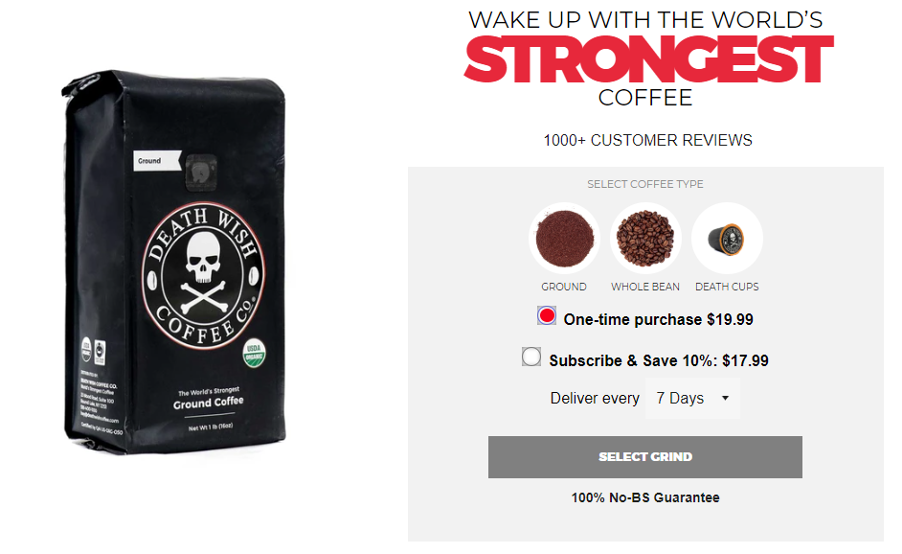
It’s a USP that immediately separates them from the competition. And the company backs it up by breaking down how it’s made.
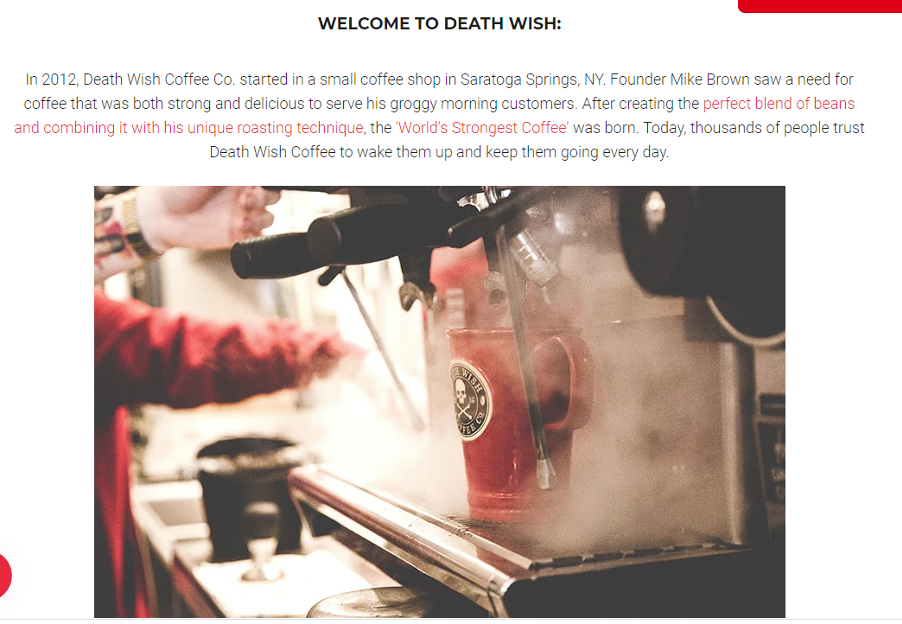
Write down everything that makes you different from the competition and how you can meet your audience’s unfulfilled needs to come up with a brand selling point that sets you apart and helps guide the future of your business.
4. Create your business name and logo
Having a product and unique selling proposition should give you some ideas for naming your business, but now’s the time to settle on one.
A good business name should be:
- Related to your business
- Memorable
- Easy to read and say
- Easy to understand
- Inoffensive
To come up with a brand name that meets these criteria start by writing down any words that fit your business. For example, if you were selling pet beds, ‘pet’ and ‘beds’ would be keywords, but ‘dogs’, ‘cats’, ‘furry’, ‘woof’, ‘purr’ might be too.
Take these keywords and enter them into a business name generator. Here are some names Shopify’s generator came up with for the keywords ‘dog beds’.

Even if a name from the generator doesn’t immediately stand out as something you’d like as a business name, there might be ideas there that can serve as inspiration.
The next step is to check if your business name is available as a domain name for your online shopfront. Go to any domain registrar and enter your name in the search field. In the image below we used 123 Reg. But GoDaddy, Nominet, Shopify or Fast Hosts are all good alternatives.

Once you have a business name and domain name, you need a logo for your business. Your logo will be a key feature of your branding and appear on your e-commerce website, product packaging and marketing materials.
Like your name, your logo should represent your business. It should also be simple, memorable, timeless, versatile and appropriate.
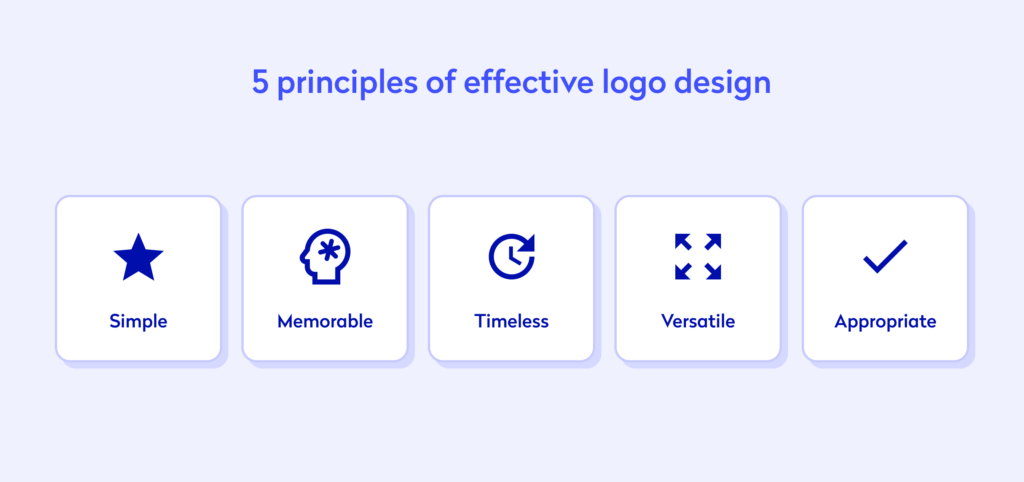
If you’re working on a bootstrapped budget, there are several great tools that let you design a simple, but professional logo for free or a small fee:
To help you with your design, here are two insights to keep in mind:
- 95% of the world’s top brand logos use one or two colours
- 93% are simple enough to be recognised at smaller sizes
To help you understand why certain brands use specific colours and how colours can trigger different emotions, read Buffer’s great post on colour psychology.
If you have some budget to play with, check out Fiverr, Upwork and 99designs. All three let you outsource to talented designers for an affordable price.
Quick Tip: To dive deeper into how to choose the right branding for your business, including how to align your core values and messaging with your chosen assets, read our guide on how to build a brand that customers love.
5. Register your business
To make your online store a reality, you need to register your business so that you can pay tax and National Insurance, and stay compliant with HMRC and Companies House.
There are four options for registering:
- Sole trader: A self-employed business owner, who owns and runs their own business individually. Registration is free and you keep all the business profits after tax.
- Limited Liability Company (LTD): A company with a legal identity, separate from owners and directors, where the company (rather than you), enters into contracts and acquires debt. This means that money earned belongs to the company and must be withdrawn as a salary and/or dividends and you aren’t required to sell personal assets to pay off debt. Registration through HMRC is more complicated than setting up as a sole trader, but you can simplify the process by using our easy and fast company registration service. (We’ll also give you a free business bank account!)
- Partnership: Similar to a sole-trader set up but the partnership, as well as the individuals, must be registered for self-assessment. A partnership must dissolve if one partner leaves.
- Limited Liability Partnership (LLP): Similar to a limited company in terms of registration and accounting, but responsibility is shared between partners.
Each option comes with different legal and tax obligations and its own set of pros and cons. To help you choose and understand the registration process, check out our in-depth post on how to register a business in the UK.
6. Write your business plan
A business plan outlines what your company does, how it does it and how it will achieve success.
As an internal document, it’s a roadmap that gives you a clear sense of direction and prepares you for every eventuality. As an external document, it’s crucial for helping you secure funding and/or investment and attracting talent as your business grows.
Your business plan should feature nine sections that give an accurate picture of your business model, structure, operations and finances.
- Executive summary: A top-level look at your business that highlights your mission, vision, goals, product, leadership, finance information and planned growth.
- Company description: Your company’s mission statement, profile and objectives. The who, what and why of your business.
- Market analysis: Details of your target audience, customers and competitors to show there’s a need for your business.
- Management and company structure: Your team and business structure, with details of what each person’s role is within the company.
- Product information: Details of your products, how you’re sourcing them, price points and any future product considerations.
- Marketing and sales strategy: How you plan to attract and retain customers.
- Funding information: Details of how much money you need to start your business and how you’ll use capital.
- Financial projections: Your projected sales and costs.
- Appendix: Any additional information such as reference letters, credit reports, licences or legal documents to support your business plan.
If you plan to source products through manufacture or wholesale where upfront costs can be significant enough to require external finance, a business plan is the document that will help convince bank managers and investors that your business is a safe bet.
Quick Tip: To help you write a compelling document that includes all the essential information, read our step-by-step guide on how to create a business plan in 2020.
7. Set up an Internet Merchant Account (IMA)
To accept debit and credit card payments online, you must have an Internet Merchant Account (IMA).
An IMA is a type of bank account that temporarily holds, authorises and then pays out the funds from credit card transactions on your e-commerce site. It’s essentially a holding zone for your online credit card payments that works to authorise sales on your site and protect you from fraud before the transaction is allowed to fully process.
Here’s how it works.
- Once a credit card is swiped, the card details are sent to your customer’s bank to verify the authenticity
- Once verified, it is then processed by the merchant account
- Finally, the money lands in your business account.
You’ve probably seen how this works first hand through PayPal, SagePay, Stripe or Worldpay when making a purchase online. Here’s an infographic from Startups (using Worldpay as the merchant account) that details exactly how it works:
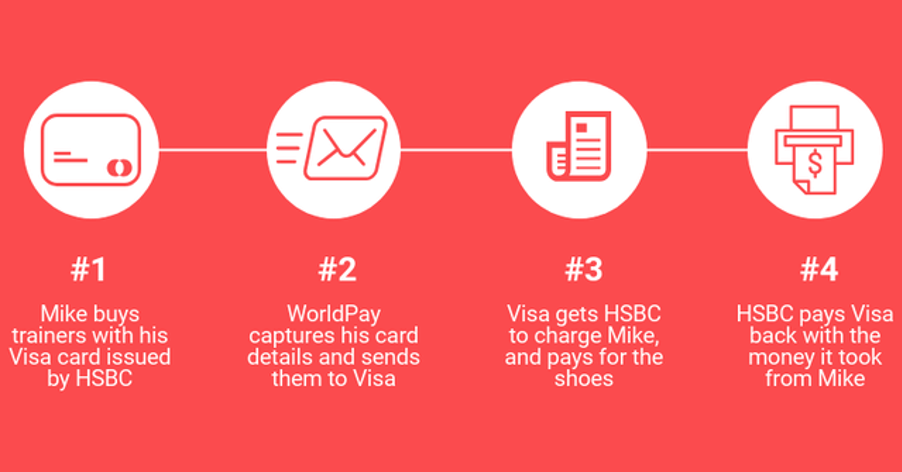
By putting these steps in place, the merchant account works to a) make sure the customer has the funds to pay and b) protects you from card fraud.
You can set up a merchant account through a high street bank or via an independent Payment Services Provider (PSP) like PayPal which can issue an IMA on behalf of your preferred bank. As fees and rates vary widely across providers, you should shop around and gather several quotes before making your decision.
Startups has a detailed breakdown of the best IMA providers in the UK, as well as a handy tool to help you compare fees.
What you’ll need to set up an IMA
Securing an IMA isn’t as straightforward as opening a bank account. Providers will consider your credit history and any previous merchant accounts you’ve had. They’ll also ask to see:
- Your business plan
- Details of your product(s)
- Details of suppliers or manufacturers
- Details of your delivery process
- Your online terms and conditions
The more information you can provide, the more likely it is you’ll be accepted.
8. Choose your e-commerce platform
An e-commerce platform is the software that your website is built on. These platforms are designed to make it easy to set up a shopfront and manage your orders and inventory in the background.
There are dozens of viable platforms out there to choose from. Here are five of the biggest platforms on the market for your consideration:
1. Shopify
Shopify is the biggest and most popular e-commerce solution, powering over one million stores in 175 countries, including major brands like Heinz, Hasbro and Penguin Books.
Shopify is easy to use, intuitive and provides excellent customer support. Plans run from $29 per month for a basic store with up to two staff accounts and four locations, up to $299 per month for up to 15 staff accounts and eight locations. However, there are transaction fees and costs for additional features that will bump up your monthly outlay. To give new users a feel for the platform before committing, Shopify offers a 14-day free trial that’s worth taking advantage of.
2. WooCommerce
WooCommerce is an e-commerce platform plugin designed for WordPress, turning an ordinary website into one that’s capable of taking orders. The platform powers over three million websites and over 8,500 online stores in the UK and is popular for its wide range of customisation features that give you full control over how your store looks and feels.
It’s also open-source, which means it can be downloaded, along with WordPress, for free. Unfortunately, open-source also means you’ll need to pay for web hosting and the platform doesn’t offer dedicated customer support like Shopify. However, there is ample help provided in the documentation and online forums.
3. BigCommerce
BigCommerce is a direct competitor of Shopify and matches it in usability, features and big-name users, with brands like Gibson Guitars and Toyota using the platform. Its pricing plans are similar too, ranging from $29.95 per month for a basic store up to $299.95 per month for a pro setup with full scalability and comprehensive features.
Unlike Shopify, however, BigCommerce doesn’t charge transaction fees, which can lower costs on one hand. On the other hand, premium design templates can cost over $150. BigCommerce offers a 15-day free trial for users to try before they buy.
4. Magento
Like WooCommerce, Magento is open source and free to use (you’ll need to pay for your own web hosting). It also offers limitless customisation possibilities, allowing you to create an online store that works exactly how you want it to, with a look that’s completely different to other stores.
But the advanced features come with a steep learning curve and making the most of them requires some coding knowledge.
5. Wix e-commerce
Wix e-commerce is a beginner-friendly drag-and-drop platform designed to get you up and running quickly. Besides being easy to use, Wix’s biggest benefits are its wide range of attractive templates and lack of hidden costs—everything you need to sell online is included in its pricing plans.
It’s also more affordable than Shopify and BigCommerce, with plans starting from £13 per month for a basic store, up to £22 per month for the VIP package. The downside to these packages is that there is no unlimited option, which can stunt how far your business can grow on the platform. Wix e-commerce has a 14-day free trial for new users.
These are all great platforms, but there’s no one-size-fits-all solution. Take some time to review features, compare prices and take advantage of free trials to see which option fits your needs and offers the best value for money.
9. Build your online store
Once you have the infrastructure in place, you’re ready to set up your store to attract customers.
Start by getting the essential pages in place:
- Homepage: An introduction to your store that gives visitors a feel for your brand, promotes your best offers and helps people get to where they want to be. To give you an idea of what to include on your home page, take a look at the results from a usability study by KoMarketing.
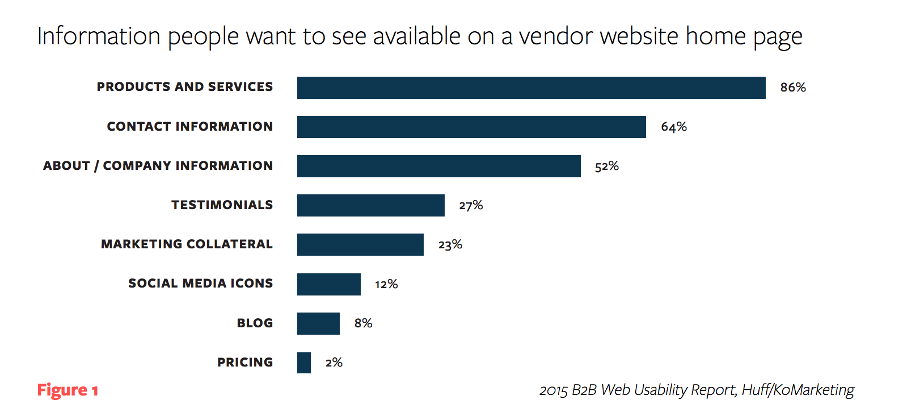
These results are from 2015, but they hold strong in 2020. People want to know what you do, how you do it and how to get in touch.
- Shop: A home for your products that lets visitors easily browse, find information and purchase products. Take inspiration from how The Critical Slide Society presents its products, with items given lots of space to grab attention and a simple menu for users to quickly access different categories.

- About: The story of your business, your purpose and mission statement. Your about page gives people an insight into why you do what you do. It’s a chance to create an emotional relationship with customers that can increase their lifetime value by 306%.
- Shipping and returns: Make it easy for visitors to find out how much they’ll pay for shipping and provide clear steps on how to return unwanted or faulty items. Check out fashion brand Tluxe’s fuss-free page that makes information easy to follow.
- Contact page: Have a contact page link in the main menu of your site that lets customers know the different ways to get in touch. At a basic level, your contact page should include an email address, phone number and contact form. You may also want to include social media links and a physical address. As well as having a dedicated page for contact information, include your email address and phone number in the footer of your website so that it’s visible on each page.
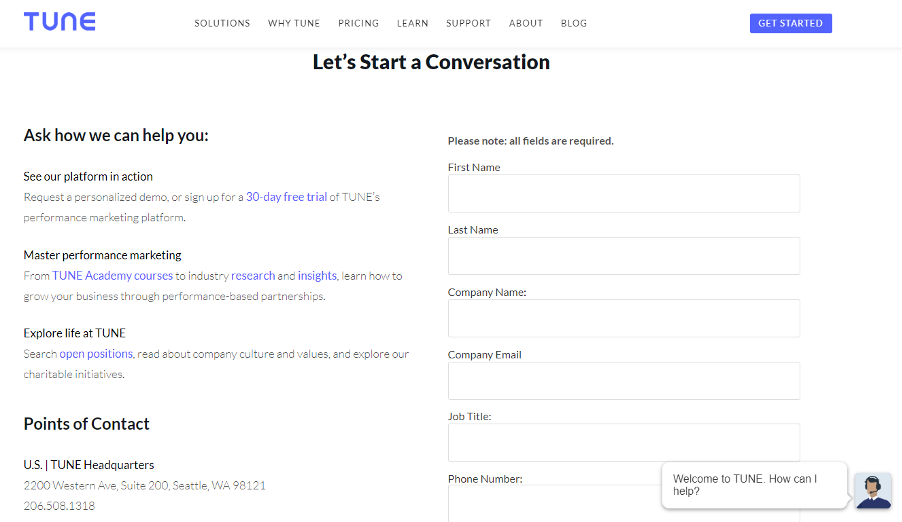
- FAQs: This page helps you answer your most frequently asked questions to cut down on the number of customer enquiries you receive. Start by answering common questions related to orders, deliveries and accounts, then add to the page as you learn more about customer queries.
What makes a good website?
As you create your pages, focus on the features and functionality that help create a positive customer experience.
- Fast loading: This shouldn’t be a problem if you’re using one of the aforementioned e-commerce platforms, as they’re designed for speed. However, research shows that the probability of people leaving your website increases by 90% if your page takes five seconds to load, so it’s worth monitoring how fast your pages load using a tool like Pingdom’s Speed Test, Google’s PageSpeed insights tool or Google’s Core Web Vitals report.
- Quality design: Again, this won’t be an issue if you’re using a template from an e-commerce platform, but you’ll want your theme to be pleasing on the eye. 38% of people say they’ll stop engaging with a website if the layout is unattractive.
- Simple navigation: Navigation is taken care of by the theme that you choose for your store, but test how easy it is to get around. Can customers comfortably find the products they’re looking for through categories and filtering? Is there a site search button for people who already know what they need? People shop online because it’s convenient. Make sure there are no obstructions that taint the experience.
- Easy payment process: Make it as simple as possible for people to purchase your products with minimal distractions, clear buttons that guide them through the checkout and security certificates and guarantees that reassure customers. Here’s an example from Hiut Denim’s basket page.

Notice how clear the buttons are and how the only things to distract customers are the reassuring messages—‘Free Returns.’ ‘Free Repairs For Life.’
This simplicity is carried over to the checkout page.
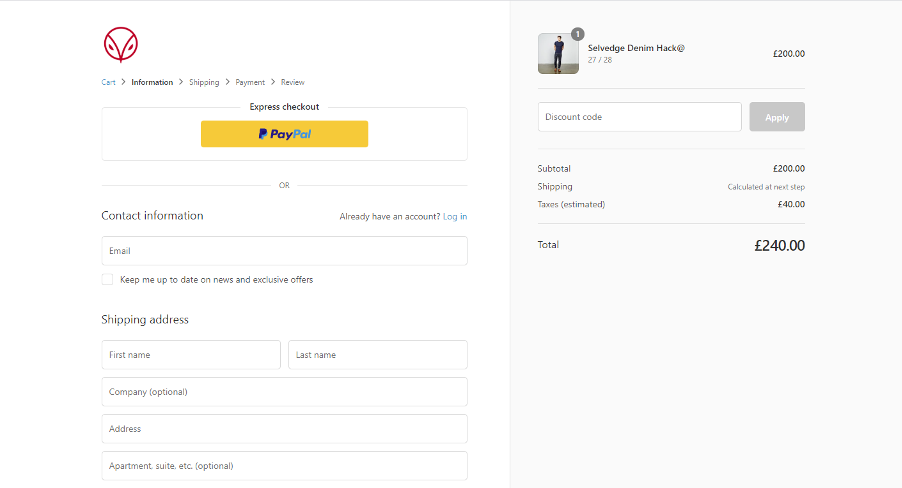
- Professional images: If you’re selling products through a wholesaler or drop-shipping company, high-quality images will be provided by the manufacturer. But if you’re making or manufacturing products you’ll need to create your own images. Make sure items are clear and photographed in a high resolution so that customers can zoom in without pixelation. Also, to ensure fast load times make sure your images are compressed as much as possible by using a tool like TinyPNG. If your budget allows, it’s worth hiring a professional photographer to snap your products. If you prefer the DIY approach, check out Shopify’s post on producing beautiful photography.
- Great product descriptions: What you say about your product can make or break a sale. A good product description should focus on the benefits of the product and what it does for the customer. Avoid any jargon and use short, conversational sentences to appeal to the customer’s emotions. Don’t forget to consider SEO factors to help rank higher in search engine results pages (SERPs), such as creating unique descriptions and focusing on target keywords. Here’s an example of a product description done well from Method Home:
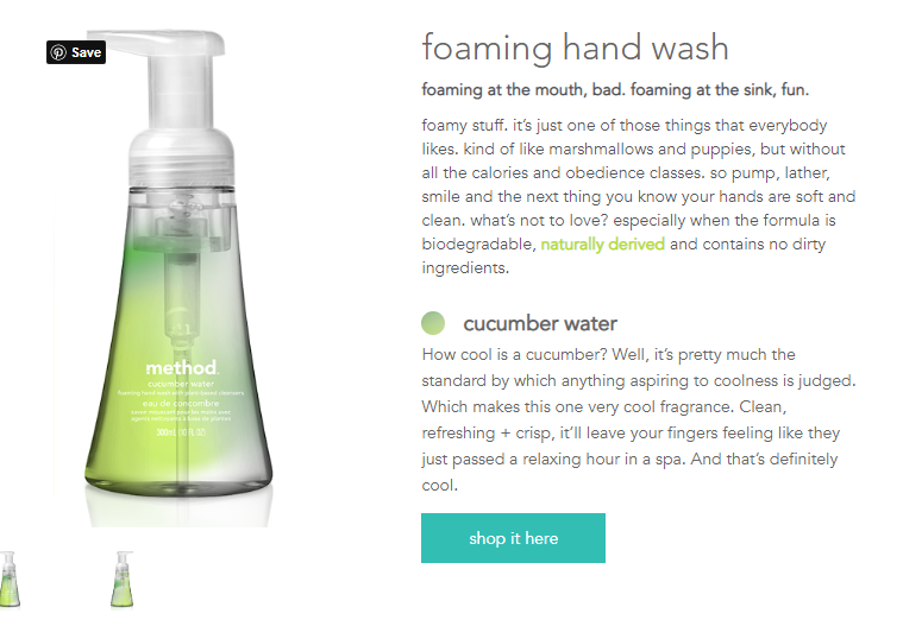
- Product reviews: 93% of consumers say online reviews impact their purchasing decisions. Each of the e-commerce platforms we mentioned above includes plugins that let you add reviews to your site. Make the most of them. For every product you sell, ask the customer to leave a review. 68% of consumers will leave a review if asked and the more you have the better. BrightLocal research shows that, on average, consumers want a business to have 40 online reviews before they believe its average star rating.
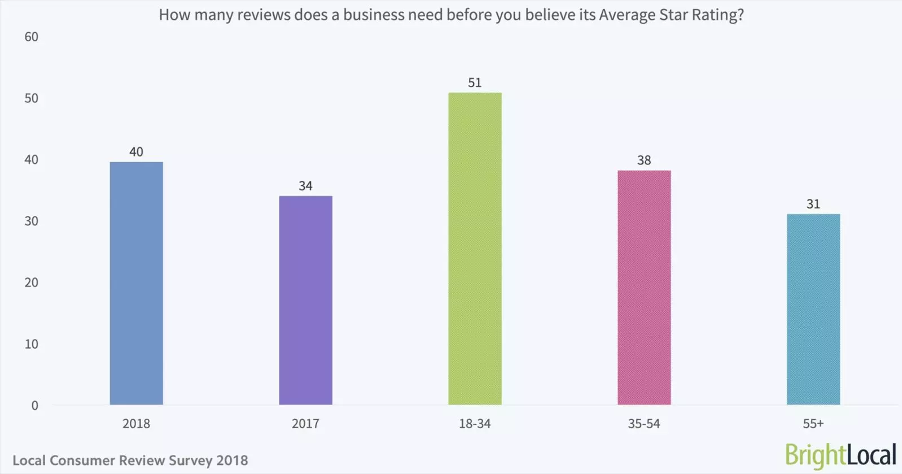
- Customer support: As a new business you need to work harder to earn the trust of consumers. A lot of that work is done through customer service interactions. 73% of customers fall in love with a brand and remain loyal because of friendly customer service reps and 93% of customers are likely to make repeat purchases with companies who offer excellent customer service. Make yourself available to customers via email, phone, social media and live chat.
10. Prepare to ship your products
Before you can begin taking orders, you need to think about how they’re going to get to the customer and what they’re going to look like when they do.
If you’re working with a drop-shipping company, you won’t have to worry about shipping as it’s all taken care of. All you need to do is list the shipping costs on your website. The packaging can be handled by the drop-shipping company too, although it is possible to arrange for products to be shipped in branded packaging.
Packaging won’t be a worry if you’re sourcing products from a wholesaler either. Products will be packaged by brands and all you need to do is pop them into a box for safe transport.
But let’s look at what you’ll need to take into account if you’re packing and shipping your own products.
Packaging your products
Packaging is the first thing customers will see when unboxing their purchase—and first impressions matter. 61% of consumers say they’re more likely to make a repeat purchase of a luxury product if it came in premium packaging and 50% will recommend your product if it came in branded packaging.
To get some ideas for packaging, take a look at what your competitors are doing. A simple Google search will also throw up plenty of inspiration.
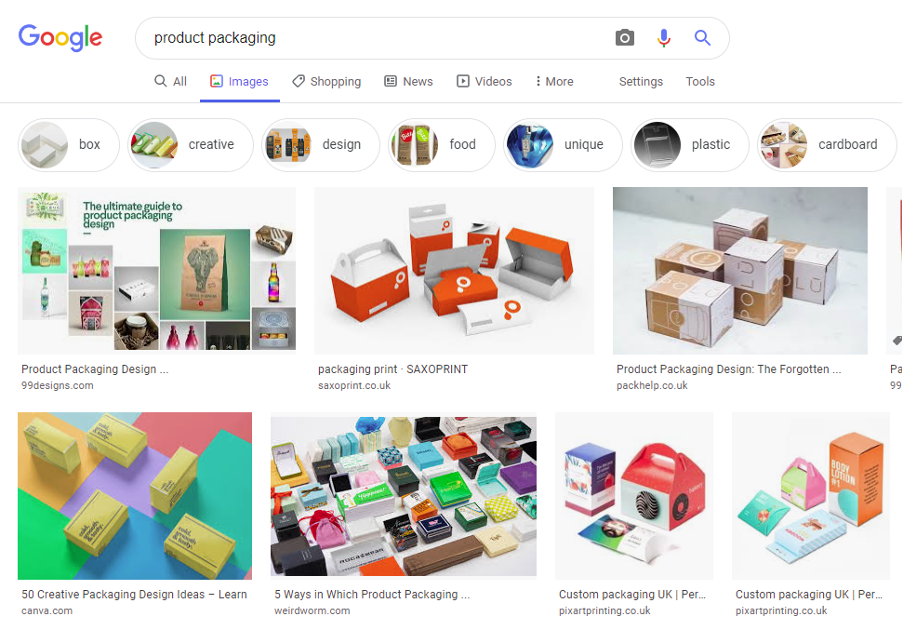
Once you have some ideas, carry out more research to find out how much design and materials will cost. Prices vary dramatically depending on the details, shape, size and type of product, but you’ll want to have an idea of:
- One-time costs: For original design work and print plate setup
- Per-item costs: For materials (e.g. boxes, bags, tissue paper and tape) and labour
A good place to start is with 99 Designs’ ultimate guide to product packaging design, which breaks down everything packaging needs to include.
Shipping your products
As with packaging, shipping costs vary widely depending on the size and weight of your products, where you’re shipping to and which shipping company you use.
First, you’ll need to find out if there are any restrictions or regulations that will impact the price of shipping or your ability to ship goods to a specific country. Check out the Institute of Export & International Trade’s guide to Understanding Local Regulations.
Finding out how much shipping will cost in the UK or abroad is straightforward thanks to UK Postbox’s shipping calculator, which gives you prices from multiple shipping providers based on the size and weight of your product.
Another aspect of shipping that will impact cost is how you’ll ship your products and where from. In the early days when order numbers are modest, it’s best to ship products from your home or business premises via the best value provider from UK Postbox’s shipping calculator. This way, you’ll be able to keep costs down and avoid the stress of outsourcing to a third party.

As your business and orders grow though, you may need to look at shipping through a logistics company that will collect, package and ship products to customers on your behalf. Using a logistics company will lower the cost of shipping per item as companies can command lower postage rates, but there’s likely to be minimum order numbers (e.g. a guaranteed 500 orders per month), as well as fees for holding stock and picking and packing products.
To help with your search for a logistics provider, Clipper Group recently listed the UK’s top 30 companies.
11. Make your pre-launch checks
After all the work you’ve done to get your product and online store ready, the last thing you want is a small mistake or missing detail to sour your big launch.
Before you publish your website, make sure you’ve ticked off everything on this list from WooCommerce’s pre-launch checklist. This list includes the following categories: design, functionality, e-commerce set up, SEO, security and legal.
You should also make sure you’re familiar with the Electronic Commerce (EC Directive) Regulations 2002. These regulations are in place for every business that advertises and sells goods online and is designed to protect both merchants and customers.
Complying with the EC Directive will protect you against customers cancelling orders, seeking a court order against you and suing you for breach of statutory duty. To be fully compliant, you’ll need to display the following information on your website:
- Full business details
- VAT number (if applicable)
- Prices, including delivery and tax
- Details and registration number of any trade organisations you belong to
- Details of relevant authorisation schemes
- Details of professional qualifications
- Details of contracts, including conduct, terms and conditions and technical steps
If you send emails to customers, these must include:
- Details of your business or the person sending
- Clear identification of goods, discounts, competitions and gifts
- Clear explanation of qualifying conditions
You can find out more about the EC Directive on the government’s legislation website.
If everything is present, correct and working, you’re ready to show your store to the world.
12. Market your online store to drive traffic
Now that you’ve launched, it’s time to market your brand and products to drive traffic to your store.
You can do this in several ways:
- Social media: 53% of consumers say they’re likely to buy from brands that are transparent on social media. Posting regularly and joining in with conversations on channels such as Facebook, Twitter, Instagram and Pinterest can help you build trust and develop a loyal customer base.
- Content marketing: 70% of marketers actively invest in content marketing and nearly 40% say that it’s a very important part of their overall marketing strategy. Creating blog posts, e-books, videos, guides and other types of content delivers value and builds connections with your audience to turn them into customers.
- Search Engine Optimisation (SEO): 48.1% of people in the UK start their product search on Google. SEO is the process of getting your business to show up when people search for your products by creating keyword-friendly, quality content in your website copy and marketing materials.
- Paid media: This involves using highly targeted ads on paid channels like Google Ads and Facebook Ads to drive traffic to your website and product pages and it’s a tactic that delivers results, with paid ads delivering an average $2 in revenue for every $1 spent.
- Email marketing: Collecting email addresses and marketing to your customers directly with product updates, special offers, discounts and valuable content is a proven way to get customers to buy from you. According to the DMA, for every $1 spent on email marketing, you can expect an average return of $42.
We explore each of these online marketing channels and techniques in detail in our post on how to create a complete digital marketing strategy for small businesses. Following this guide will help you identify your target market, set goals and create a marketing plan that attracts visitors and turns them into loyal customers.
Wrapping up
You don’t need prior experience to start and run a successful e-commerce business—you just need to be willing to put in the hard work to build from the ground up.
Think carefully about which product to sell and research different business models to find a solution that fits with your budget and long-term goals. You don’t have to sell something you’re interested in, but it helps to build your business around something you’re knowledgeable about.
Once you have a product in place, your business can take shape around it. Choosing an e-commerce platform, building a store and shouting from the rooftops about your business are the exciting parts, but don’t forget about the formal aspects.
Registering your business, signing up for an IMA and reading up on the EC Directive are all crucial in helping you stay compliant. Equally as important is your business plan, particularly if you need external finance to get your venture off the ground.
Following the step-by-step process in this article will take time and a lot of planning and preparation, but the end results—working for yourself and running a thriving online store with a loyal customer base—are worth it.
Photo by Pixabay, published on Pexels






